Before enduring a 200-year tug-of-war between powers to the east and west, this resilient and unique city on the Vistula was the capital of a federation that held sway over a big slice of Eastern Europe.
For all the destruction brought upon Warsaw, there are thrilling fragments from the 16th and 17th century when the city’s kings commanded a superpower with rare levels of ethnic diversity and religious tolerance.
The last two centuries have not been kind, but you wouldn’t know it to look at the expertly reconstructed Old Town, or the ever-growing crowd of skyscrapers downtown, or the magnificent string of palaces, churches and parks along the Royal Route.
The Warsaw Uprising Museum, opened in 2004, is an important primer for any visitor, walking you through the trauma and the heroism of a few weeks in 1944 that claimed many thousands of lives and left the city in ruins.
1. Old Town
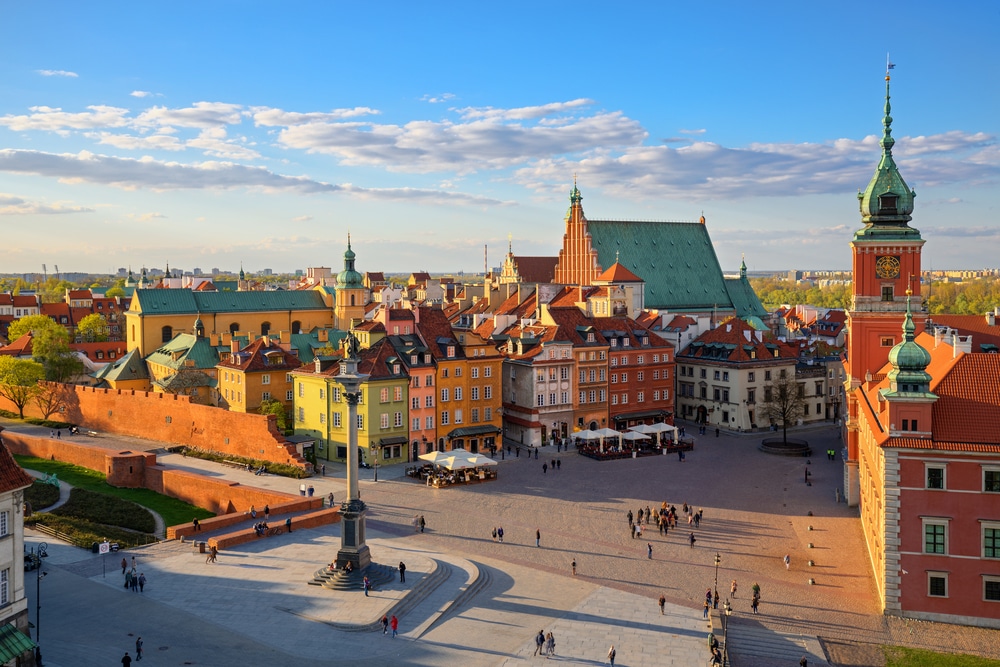 Source: fotorince / Shutterstock
Source: fotorince / ShutterstockWarsaw’s UNESCO-listed Old Town, with its cobblestone streets, animated squares and rows of pretty townhouses and tenement, is an amazing achievement.
This is Warsaw’s Medieval nucleus, still partially defended by brick walls and loaded with sights to take your time over.
The Old Town was developed between the 13th and 20th century, and has architecture in every style from Gothic to Renaissance, Mannerist, Baroque and Neoclassical.
The district you can explore today was nothing more than a wasteland after the Warsaw Uprising in 1944, and the love and skill that went into the post-war reconstruction are obvious.
We’ll come to the big sights later, there are lots of smaller curiosities to discover too.
In the Warsaw Museum and Old Town Cultural Centre you can go down into the Medieval vaulted cellars, and the Brick Gothic St John’s Archcathedral holds the tombs of the Masovian Dukes who ruled from Warsaw in the 14th and 15th centuries.
Connecting the cathedral with the Royal Palace is the Renaissance St Anna’s Corridor, where king Sigismund III Vasa survived an assassination attempt in 1620.
2. Royal Castle
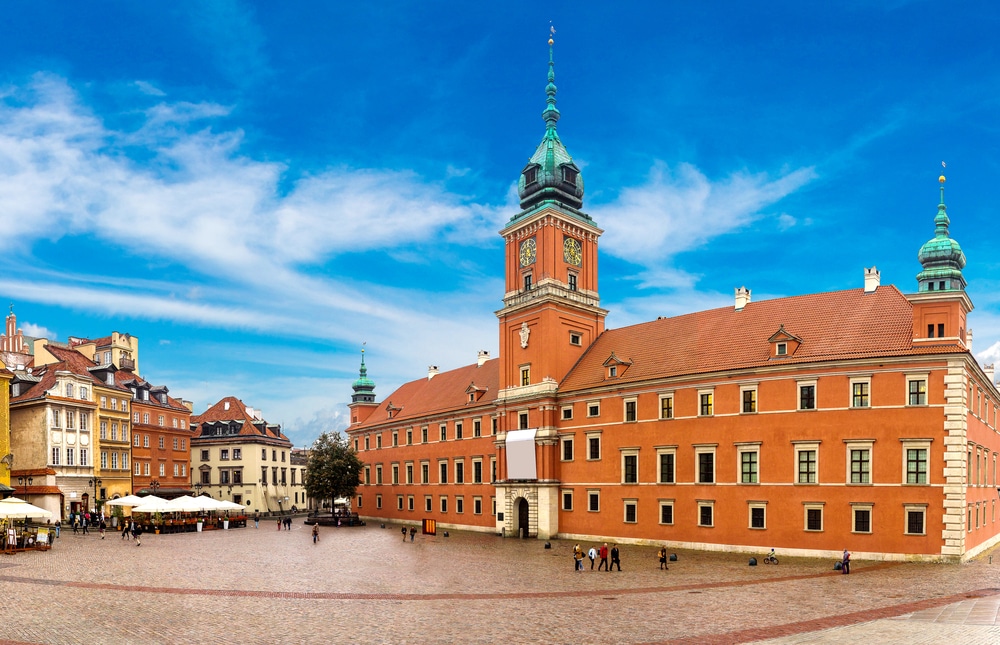 Source: S-F / Shutterstock
Source: S-F / ShutterstockA reference point on the south-east side of the Old Town, the Royal Castle was the seat of the Polish king and the nation’s parliament up to the final partition of Poland in 1795.
The palace, with a mosaic of architecture from different periods, has a history going back to a stronghold for the Masovian dukes in the 15th century, and has been the scene of many defining events, like the signature of the Constitution of 3 May 1791, the world’s second-oldest modern constitution.
The Royal Castle was totally destroyed in two stages in the Second World War, and the rebuild was carried out in the 1970s and 80s, using material from the ruins where possible.
In this painstakingly restored complex you can tour the apartments for 16th-century King Sigismund II Augustus, the 18th-century apartments of Stanisław August Poniatowski and the House of Parliament.
Throughout, you can savour painting by Rembrandt, van Dyck, Gainsborough and Lucas Cranach the Elder, and view reproductions of historic maps showing the extent of Polish territory at the peak of its power.
Another artist whose work appears regularly is Canaletto (1721-1780), who was the court painter in the last 16 years of his life and whose paintings of Warsaw were used as guides for the city’s post-war reconstruction.
3. Royal Route
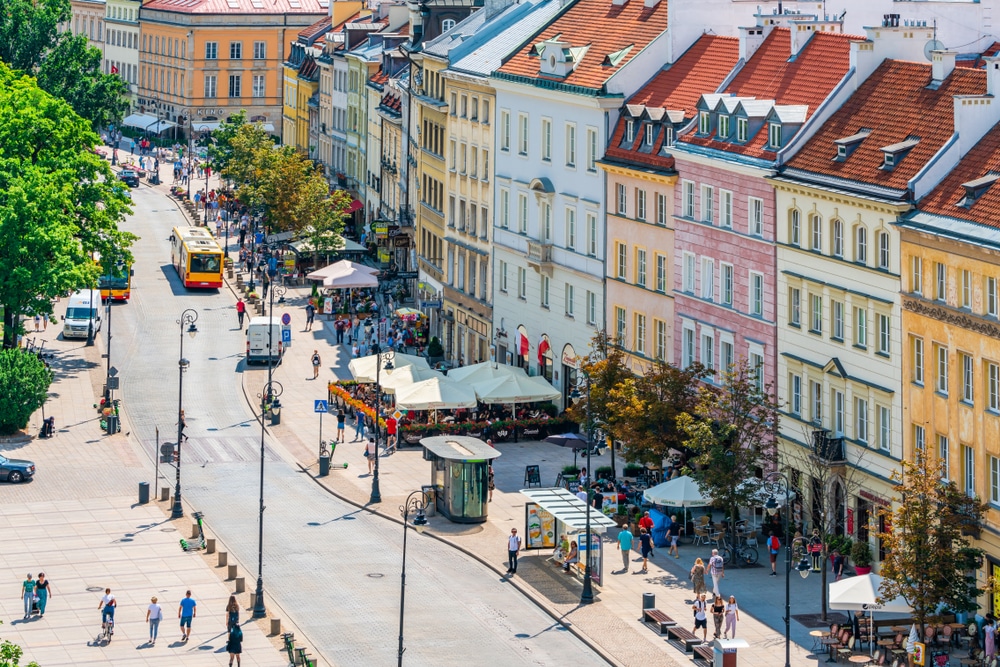 Source: BBA Photography / Shutterstock
Source: BBA Photography / ShutterstockThis former communication route leads from Castle Square in the Old Town, south along a series of interconnecting streets to King John III’s Palace at Wilanów more than ten kilometres away.
The Royal Route was designated a national Historic Monument in 1994 and along the way is a stirring succession of aristocratic palaces, churches and sprawling parks for a journey into Poland’s prestigious history, interwoven with stories of royalty, statesmen and cultural figures like Chopin.
We’ll cover Krakowskie Przedmieście, the street immediately south of Castle Square, later in this list.
One spot to investigate is Ujazdów Castle, a Renaissance residence from the 17th century with 13th-century origins, now home to Warsaw’s Centre for Contemporary Art.
While you’re on the aristocratic theme, you could also head over to the Baroque Krasiński Palace, west of the Old Town.
Built towards the end of the 17th century, this is considered the finest residence from the period, ensconced in a refined garden and housing a branch of the Polish National Library.
4. Warsaw Uprising Museum
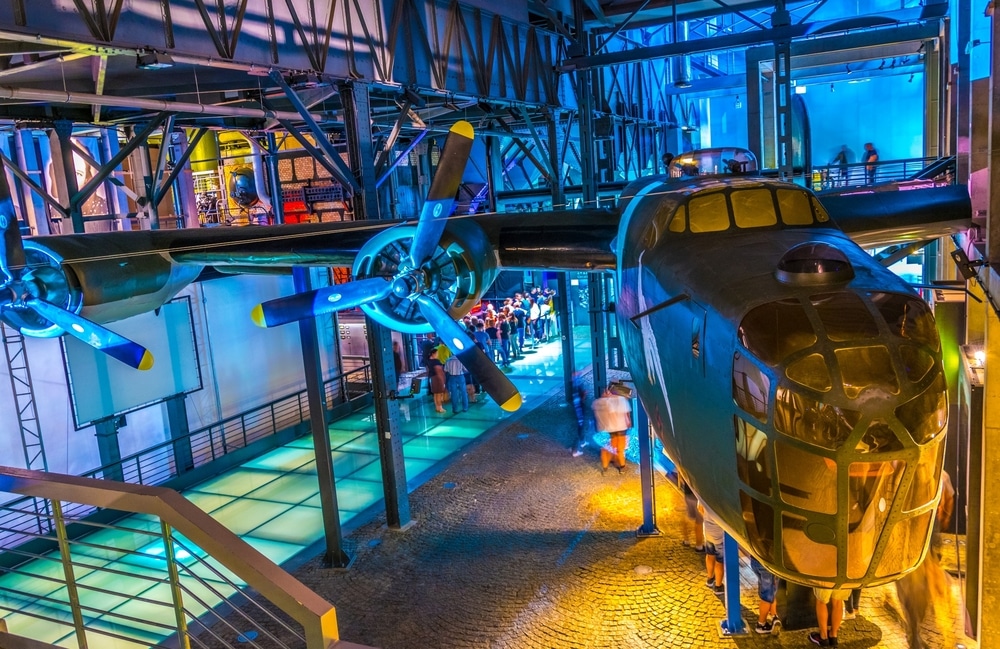 Source: trabantos / Shutterstock
Source: trabantos / ShutterstockThe single largest military effort taken by any European Resistance movement took place in Warsaw in the late-summer and autumn of 1944.
Launched as the Red Army was camped just east of Warsaw, a five-minute flight away, the campaign was fought unaided for 63 days by the Polish Underground State as the Red Army never intervened.
Eventually the uprising was quelled with breathtaking brutality that saw some 15,000 Polish Home Army killed, hundreds of thousands of civilians deported and up to 90% of Warsaw levelled in a planned destruction.
A museum for these two momentous months had been in the pipeline for decades before this top-notch museum opened in 2004.
The Warsaw Uprising Museum has tons of material, including accounts, weapons, letters, footage, audio and photography, for a clear picture of the German Occupation, the uprising and its aftermath.
A hangar contains a Consolidated B-24 Liberator, of the kind involved in relief flights during the uprising, and City of Ruins is a haunting 3D movie showing the unimaginable level of destruction that Nazi Germany left behind.
5. Łazienki Park
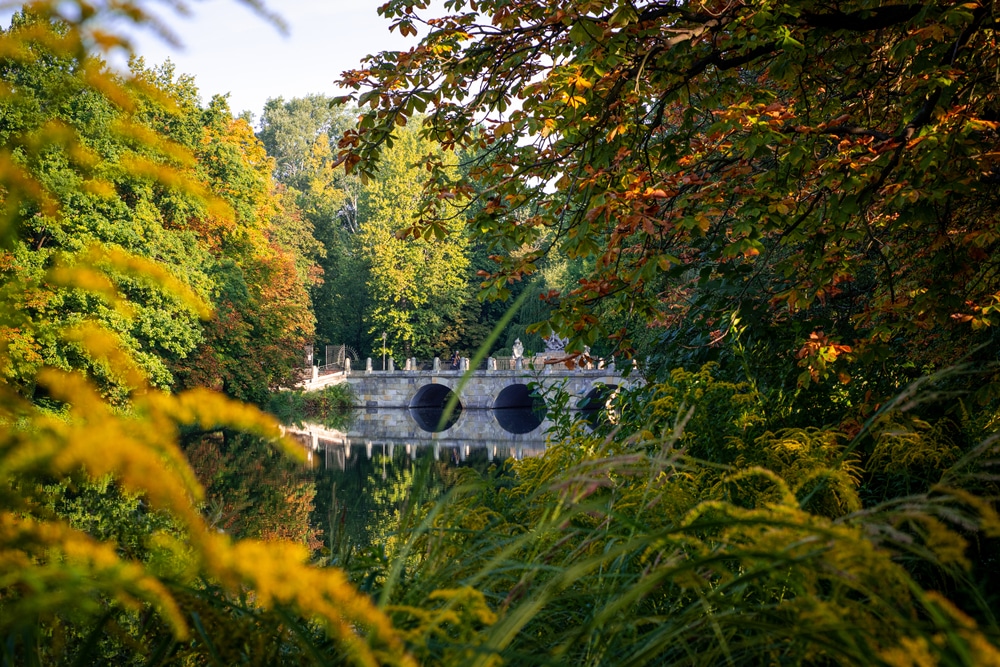 Source: GRACIELLADEMONNE / Shutterstock
Source: GRACIELLADEMONNE / ShutterstockThe largest urban park in Warsaw at 76 hectares, Łazienki Park is much more than a recreation space.
Founded as a bathing area for the 17th-century military commander Stanisław Herakliusz Lubomirski, in the 18th century this became a royal estate for Poland’s last king, Stanislaus II Augustus.
The park is littered with stately buildings relating to his Palace on the Island, which we’ll talk about in more detail later.
The king was also responsible for the picturesque canal system that distinguishes the east side of the park.
It’s no exaggeration to say that you could pass a summer’s day, ambling along the avenues and taking in sights like Old Orangery from the 1780s, with one of the world’s few surviving 18th-century court theatres.
In amongst groves of oaks, larches and ash trees dating back 200 years are yet more palaces, historic guardhouses, 18th and 19th-century follies, cafes, pavilions and dozens of worthwhile monuments, including a famous one for Chopin which we’ll talk about later in the list.
6. Palace of Culture and Science
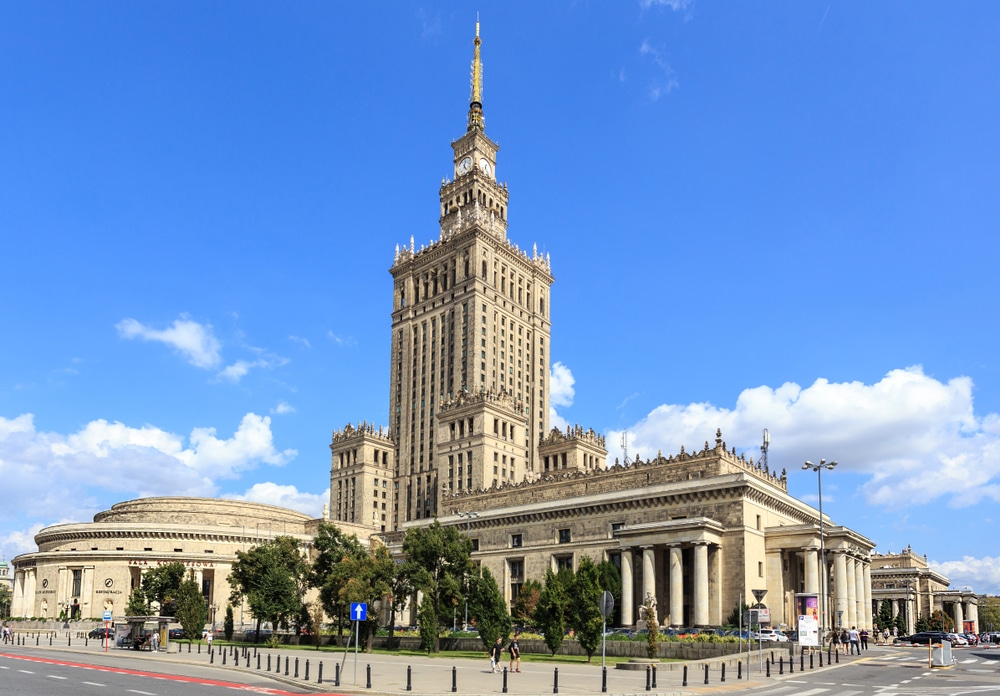 Source: Stepniak / Shutterstock
Source: Stepniak / ShutterstockThere’s still a fair amount of architecture from the post-war Communist years in central Warsaw, and the landmark that grabs you is the gargantuan Palace of Art and Science (1955).
At 237 metres, this Stalinist skyscraper is the 5th-tallest building in the EU. The architect was the Russian Lev Rudnev, and the design was partly borrowed from Moscow’s Seven Sisters, one of which was designed by Rudnev.
Despite its ungainly size, this tower isn’t entirely out of place in Warsaw, thanks to the columns, pinnacles, volutes and corbels evoking Warsaw’s Mannerist and Baroque heritage.
The Rolling Stones played the Palace of Culture and Science, and today the building houses four theatres, a 3,000-capacity auditorium, an eight-screen multiplex cinema, offices and stores, not to mention a private university on the 11th and 12th floors.
The viewing terrace, at 114 metres on the 30th floor, is one of Warsaw’s most popular attractions and grants an unrivalled view of the city.
7. POLIN Museum of the History of Polish Jews
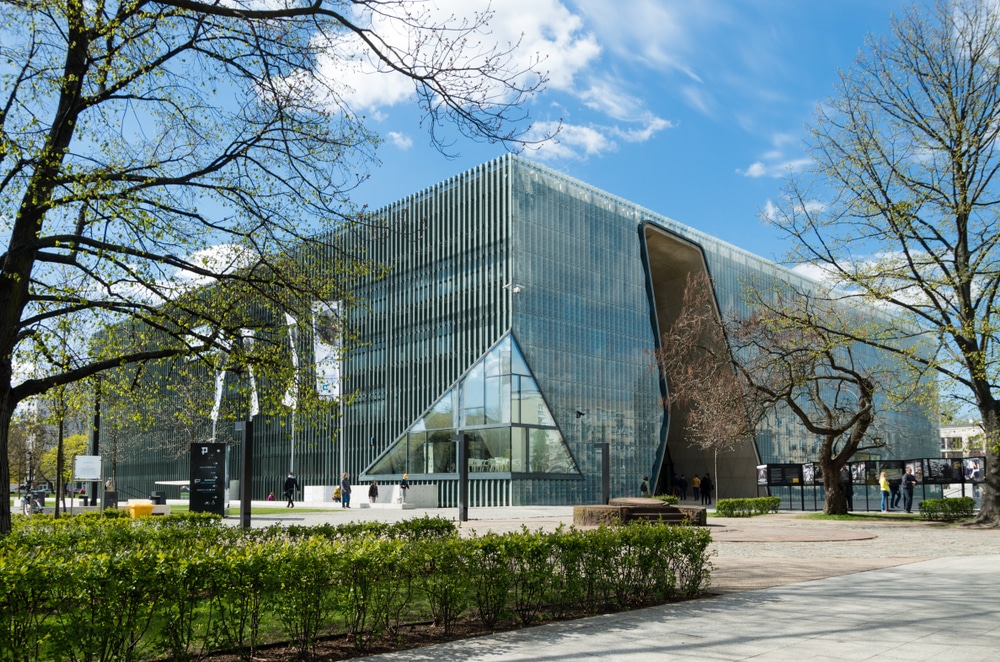 Source: rnfotografiapl / Shutterstock
Source: rnfotografiapl / ShutterstockBefore the Second World War Poland had one of the largest Jewish populations in the world (3.3 million), almost completely destroyed during the Holocaust.
This museum, opened in 2013, charts the 1,000-year history of the Jews in Poland, from the origins of the community in the 10th century to the second half of the 20th century.
The story is told in chronological order across seven highly informative and innovatively designed galleries, with some remarkable things to see, like the highly ornate roof and ceiling of a wooden synagogue from Gwoździec.
You’ll learn about the Paradisus Judaeorum, a time of rare religious tolerance during the Polish-Lithuanian Commonwealth in the 16th and 17th centuries.
And there’s a section for the turn of the 20th century, explaining the part Jewish entrepreneurs played in Poland’s growing prosperity, ushering in a second golden age up to 1939.
The Warsaw Ghetto and Holocaust are dealt with in moving detail, followed by post-war emigration and the revival of a small community since the 1990s.
8. Copernicus Science Centre
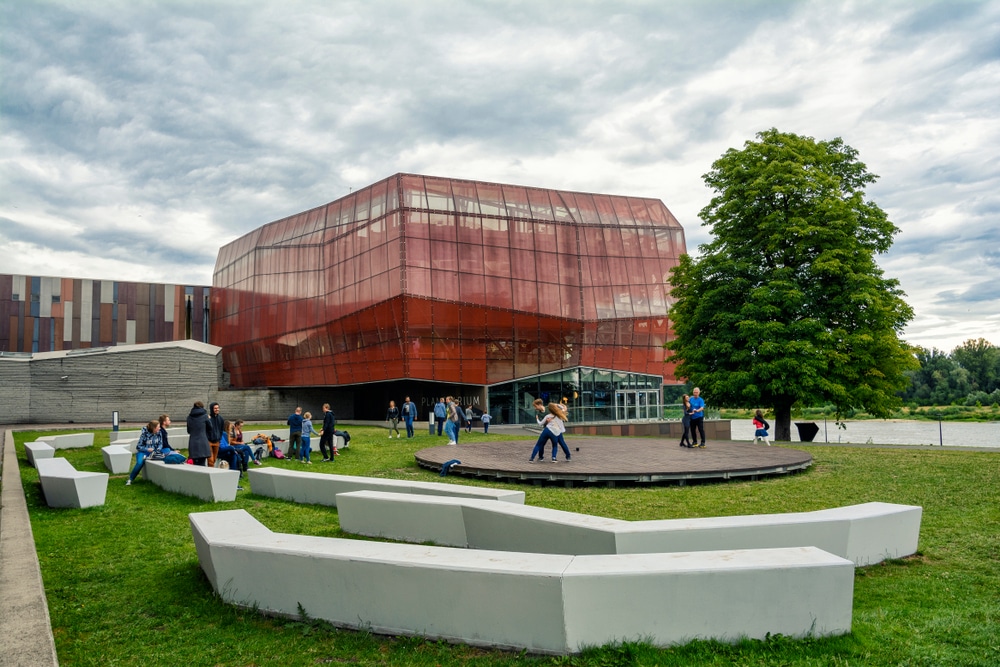 Source: ELEPHOTOS / Shutterstock
Source: ELEPHOTOS / ShutterstockOpened in phases since 2010, this hands-on science museum has more than 400 subtly educational interactive exhibits, put together with a lot of creativity.
The riverfront site, fully completed in 2018, was designed by the Warsaw firm, RAr-2 and includes a two-storey planetarium and a surrounding Discovery park with equipment for outdoor experiments, an amphitheatre and open-air art gallery.
Mainly oriented towards kids and younger teenagers, the permanent exhibition has stations that help clarify topics and concepts like inertia, the cosmos, perception, light and optics, colours, electricity, magnetism, weather, waves, simple machines and a lot more.
In an ultra-modern glass building, the planetarium has a diameter of 16 metres, with high-end projectors capable of displaying almost 16 million stars and screening immersive science-themed movies.
9. Wilanów Palace
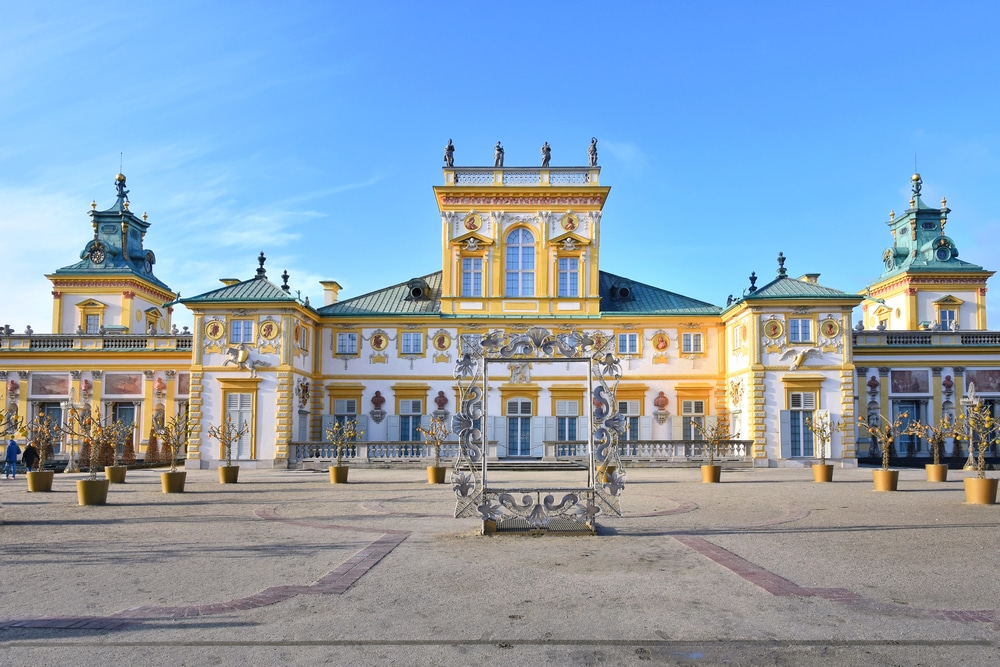 Source: Ivanova Tetyana / Shutterstock
Source: Ivanova Tetyana / ShutterstockAt the southern end of the Royal Route you can journey back to the time when the Polish–Lithuanian Commonwealth ruled much of Eastern Europe.
The highly ornate Wilanów Palace was commissioned by John III Sobieski in the 1670s and was the place where he died in 1696.
At first this was intended as a relatively modest dwelling, but Poland’s military successes in the period and the King’s growing prestige endowed the residence with more splendour.
Now Wilanów Palace, in beautifully landscaped grounds, is a shining monument to the nation’s might before the partitions of the 18th century, retaining its 17th, 18th and 19th-century decor.
The museum inside is one of Poland’s oldest, established in 1805 and the main repository for the royal collections.
There’s a lot to take in at the King and Queen’s Bedroom, the Painting Gallery, the lavishly stuccoed North Gallery and the marble-tiled King’s Library, displaying Renaissance and Baroque painting, Chinese porcelain and European weapons from the 1500s and 1600s.
The most exquisite room of all is the White Hall, completed for Augustus II in 1830-33, while the Etruscan Cabinet is obligatory for its display of 84 ancient vessels from the 8th to the 2nd century BCE.
10. Vistula Boulevards
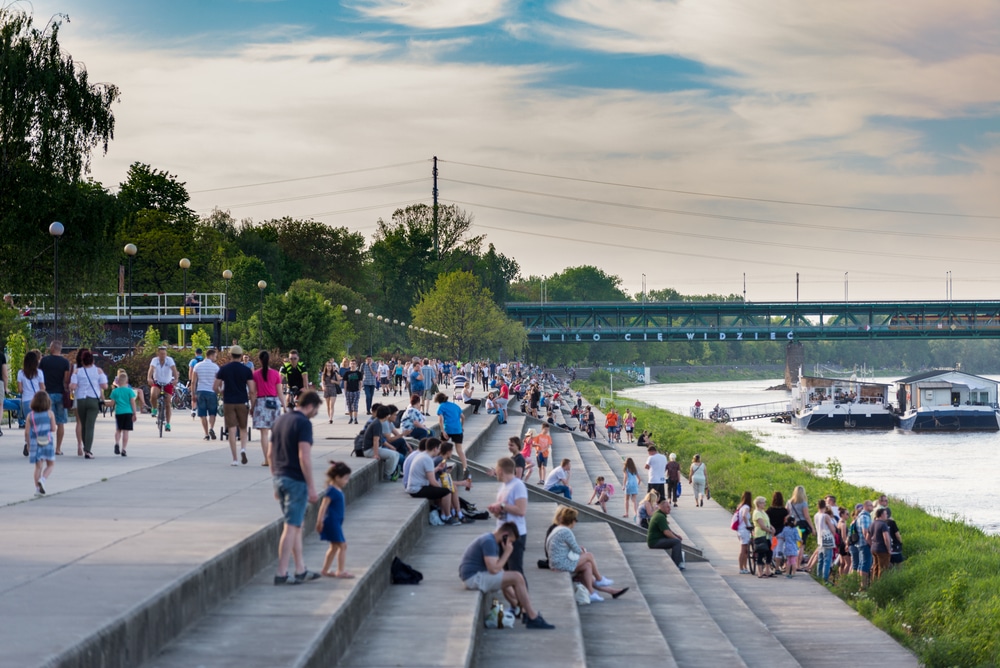 Source: Piotr Szczepankiewicz / Shutterstock
Source: Piotr Szczepankiewicz / ShutterstockIn the centre of Warsaw the left bank of the Vistula has become a genuine visitor attraction, primed for summer walks or bike rides. The city spent much of the 2010s laying down a kilometres-long chain of boulevards.
Together with the Copernicus Science Centre, these are complemented by outdoor performance spaces, a lookout tower, a beach, sloping grass verges, gazebos, a splash pad for kids, riverside bars, clubs and restaurants, stepped terraces and much more.
There’s ample seating and at night you can admire the dynamic lighting along the paths and bridges crossing the river.
You’ll come across a street food market on summer evenings, and during the day you can catch ferries or hire a rowboat or kayak for a paddle on the slow-moving river.
11. Fryderyk Chopin Museum
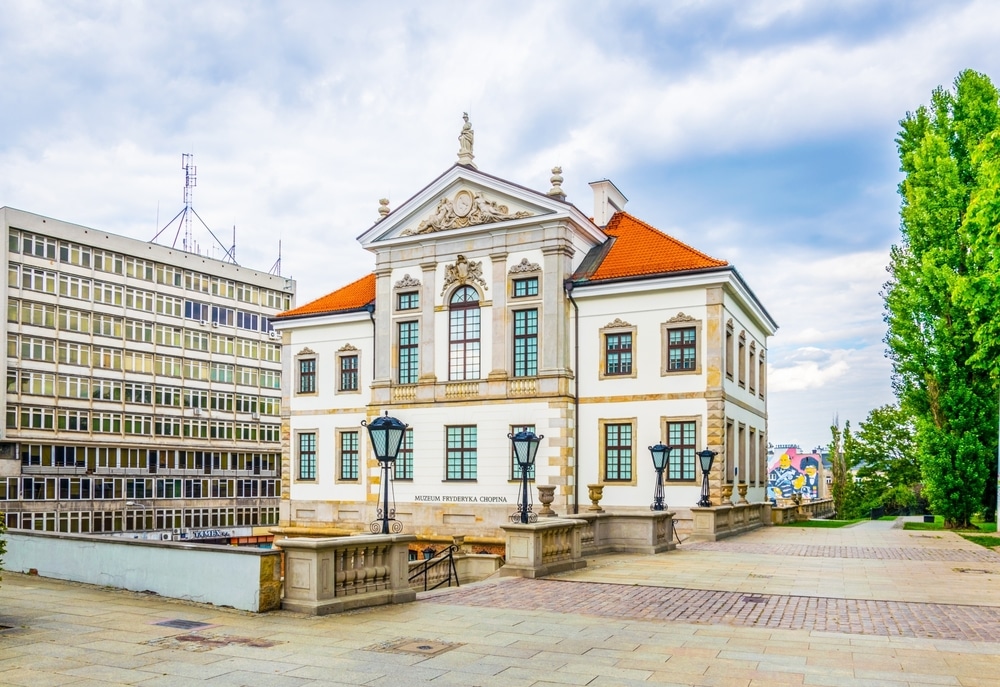 Source: trabantos / Shutterstock
Source: trabantos / ShutterstockThis museum for the great Romantic composer has been around since the1930s and moved to the Ostrogski Palace in 1953.
The attraction was given a modern upgrade with lots of interactivity and no shortage of audio in time for Chopin’s 200th anniversary in 2010.
One of the special things about the display, dealing with different aspects of Chopin’s career and personal life, is the way it harmonises neatly with the palace’s sumptuous interiors.
You’ll come away more informed about his music and relationships with important personalities like George Sand.
Just a few of the personal effects to see include a gold watch he was given as a child, his Pleyel piano, diaries, a serviette embroidered by George Sand, locks of hair of both Sand and Chopin and the composer’s death mask.
In almost every room you can hear Chopin’s pieces recorded by the world’s top artists on pianos from the composer’s day.
12. Old Town Market Square
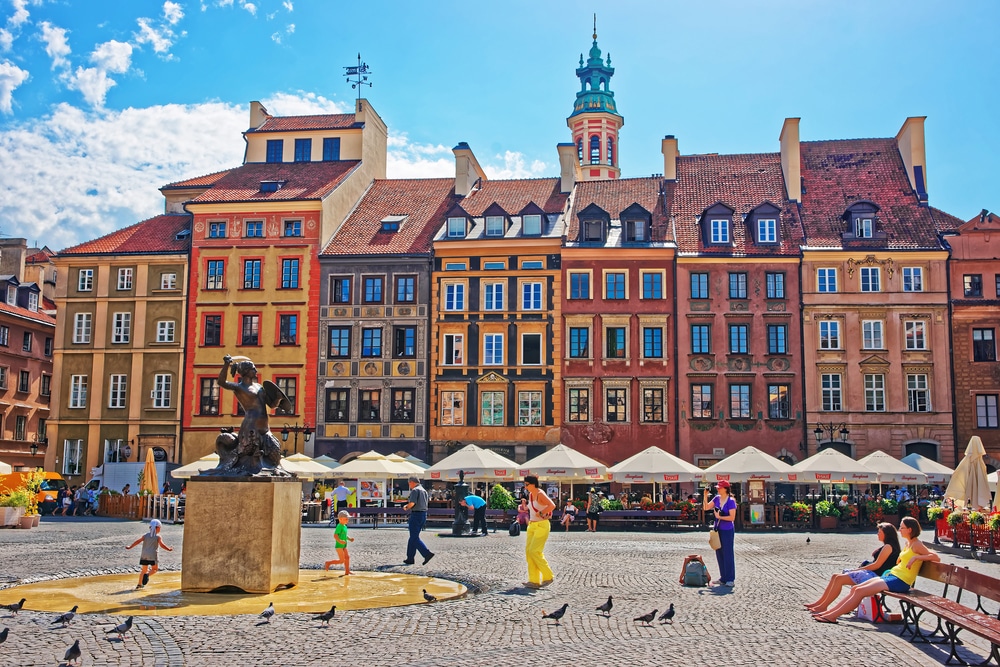 Source: Roman Babakin / Shutterstock
Source: Roman Babakin / ShutterstockLittle time was lost resurrecting the Old Town’s showpiece after the Second World War.
The lively Old Town Market Square was reconstructed from the ground up between 1948 and 1953, reverting to its 17th century appearance, with unbroken terraces of Renaissance and Baroque style townhouses.
Some of these have curious-looking loft extensions poking above the roof-line. At the centre is the bronze statue of the Warsaw Mermaid, cast in 1855 and depicting the figure that has appeared on the city’s coat of arms since the 17th century.
A few of the handsome townhouses fronting the square now contain museums, and the Museum of Warsaw on the north-west corner reopened in 2017 after a long-term refit.
13. Castle Square
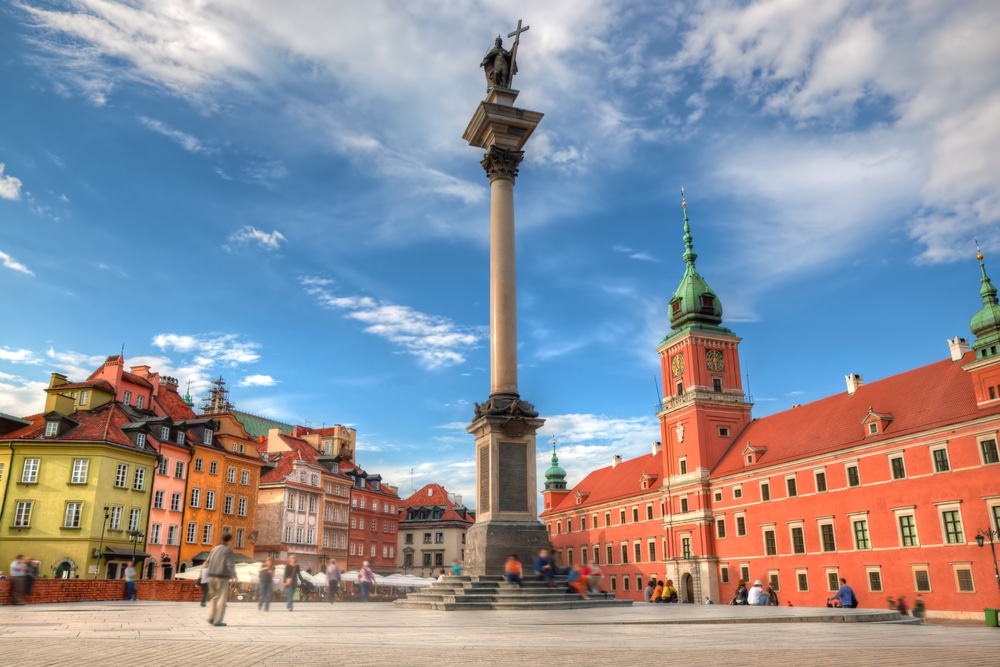 Source: PHOTOCREO Michal Bednarek / Shutterstock
Source: PHOTOCREO Michal Bednarek / ShutterstockBounded by the Royal Castle and a charming row of painted townhouses, Castle Square is the north terminus of the Royal Route and many people’s introduction to the Old Town.
The square is on a rough, triangular plan and has restaurant terraces on its west and south sides.
This is a favourite meet-up spot in the capital and has witnessed some momentous events, including patriotic demonstrations during the Russian Partition in the 19th century.
On the south side, your eye will be drawn to Sigismund’s Column, the oldest secular monument in Warsaw.
This went up in 1644, paying tribute to Sigismund III Vasa (1566-1632) who in 1596 switched Poland’s capital from Kraków to Warsaw.
A likeness of the king, holding a sword and cross, stands atop a 22-metre Corinthian column. The statue is original, with minor repairs needed after the war, and the column is all new.
The two previous columns, one marble (1644-1887) and one granite (1887-1944) can be seen on the terrace behind the Royal Palace.
14. Palace on the Isle
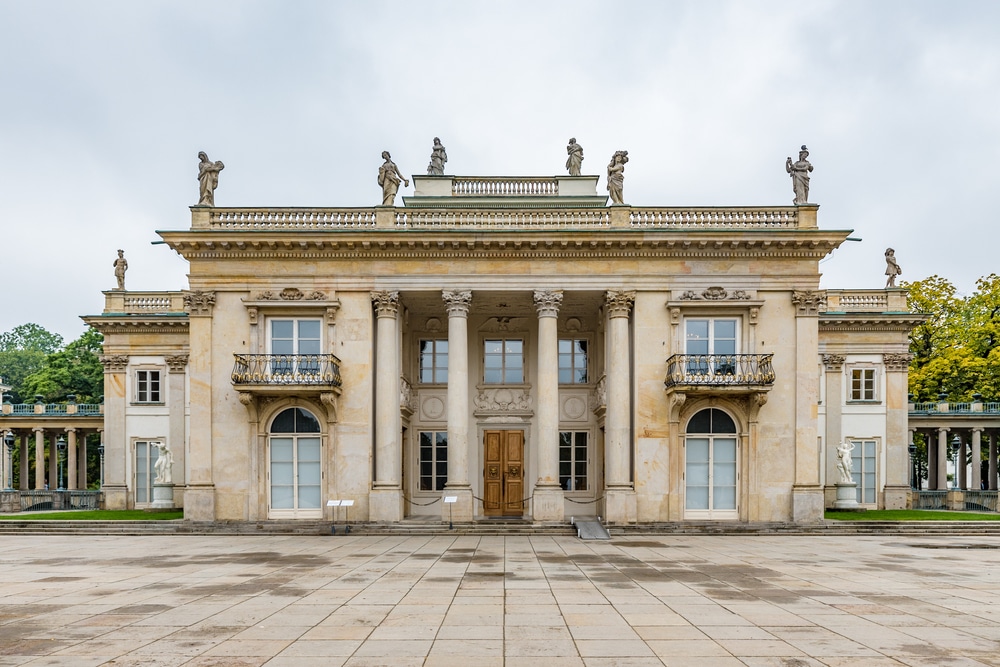 Source: Takashi Images / Shutterstock
Source: Takashi Images / ShutterstockŁazienki Park was the grounds for this opulent summer residence ordered by Stanislaus II Augustus in the 1760s and incorporating a Baroque royal bathhouse from the 17th century.
This plan was realised by a team of architects, the Italian, Domenico Merlini and German, Johann Christian Kammsetzer, and the design was inspired by history’s famous summer escapes, like Villa Borghese and Villa Medici.
The Palace on the Isle’s abundant decoration and painting collection made it all the way up to 1944 when it was almost entirely destroyed by the Germans as they prepared to destroy the building in response to the uprising.
Holes were drilled for dynamite, but demolition never went ahead. The palace is open to the public, and restorations, along with 140 paintings from the collection of Stanislaus II Augustus, give a sense of the grandeur of the palace in its prime.
The Ballroom is a treat, and has newly restored 18th-century murals by the king’s court painter Jan Bogumił Plersch.
15. Warsaw Zoo
 Source: Darek W / Shutterstock
Source: Darek W / ShutterstockForty hectares on the right bank of the Vistula is given over to one of the most-visited zoos in Europe.
The attraction opened in 1928, but has its roots in private menageries going back to the 17th century.
Two key figures in the zoo’s history are the zookeeper Jan Żabiński and his wife Antonina, who both sheltered hundreds of Jews during the Second World War, both in the zoo and in their adjoining villa.
Making the most of its large grounds, the modern zoo has more than 530 species, with top-notch habitats for its elephants, hippopotamuses and apes in particular.
The riverside location also helps wildlife conservation efforts, and the Bird Asylum on the grounds treats and releases more than 3,000 injured birds every year.
16. Krakowskie Przedmieście
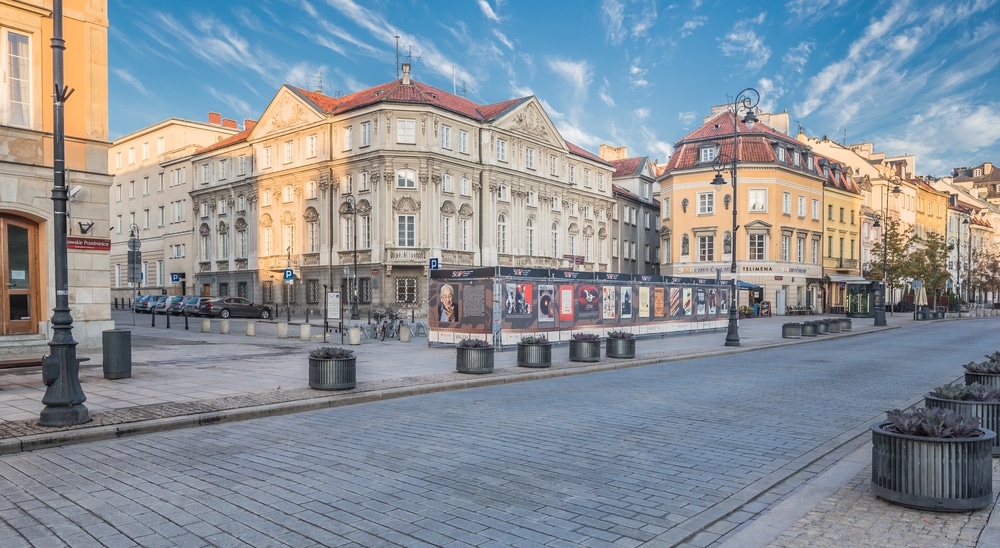 Source: MoLarjung / Shutterstock
Source: MoLarjung / ShutterstockUp there with the capital’s most celebrated streets, Krakowskie Przedmieście is on the Royal Route, continuing for one kilometre from Castle Square south to the Nicolas Copernicus monument, where it merges with Nowy Świat Street.
On foot you’ll pass a grand parade of Baroque, Rococo and Neoclassical churches, palaces and townhouses, dating from the 17th to the 19th centuries.
Among the big sights is the Presidential Palace at No. 46-48, seat of the Polish head of state, and with a history going back to 1643.
The Holy Cross Church (1679-1696) at No. 3 is one of Warsaw’s most beloved Baroque churches, and one of the chapels contains an urn holding Chopin’s heart, in accordance with the composer’s wishes.
At the corner of Bednarska Street you’ll come across the Madonna of Passau, raised in 1683 as a votive offering for John III Sobieski’s victory over the Ottoman Empire at the Battle of Vienna that year.
This is the second-oldest monument in Warsaw after Sigismund’s Column in Castle Square. Finally there’s a glimpse of the elegance of turn-of-the-century Warsaw at Hotel Bristol at No. 42-44, built in 1900 in the Art Nouveau style.
The roll call of famous guests is long and includes Marlene Dietrich, Richard Strauss, Marie Curie, Günter Grass, Sophia Loren, Picasso and Elizabeth II.
17. National Museum in Warsaw
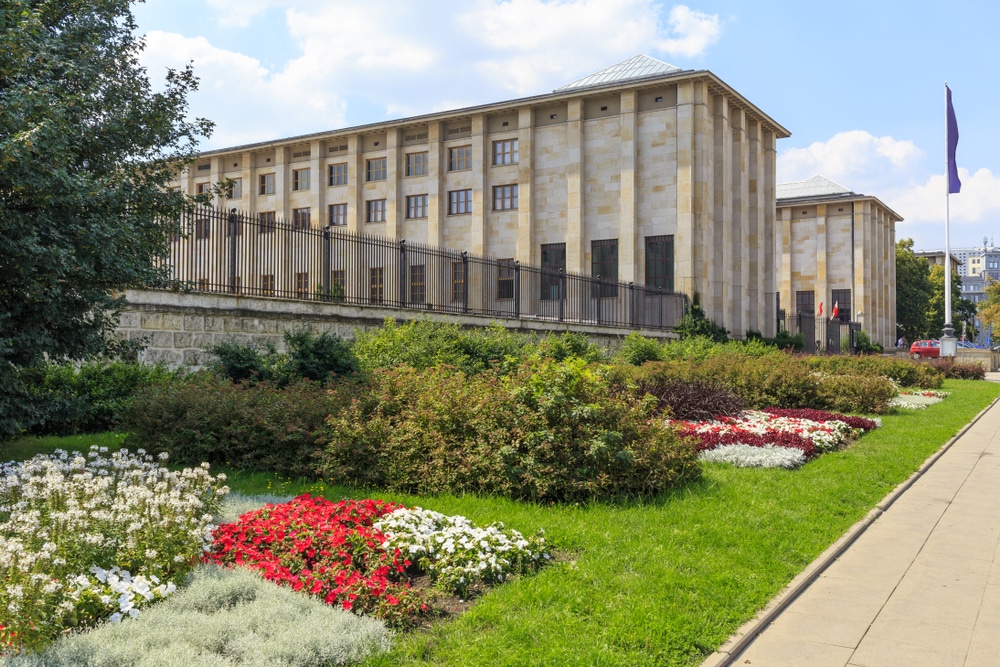 Source: Stepniak / Shutterstock
Source: Stepniak / ShutterstockIn an immense Modernist building raised between 1927 and 1938, the National Museum in Warsaw has wide-ranging collections for fine art and decorative arts from a wealth of periods and regions.
The permanent exhibition is divided between the Gallery of Medieval Art, Gallery of Old Masters, Gallery of 19th-century Art, Gallery of 20th and 21st-century Art and the Gallery of Polish Design.
Among the standout exhibits are works by Rembrandt, Botticelli, Jan Brueghel the Elder, Tintoretto, van Dyck, Jacob Jordaens, Ingres, Courbet, Signac, Renoir and many more.
The ancient collections are also compelling, and feature Mesopotamian cuneiform tablets and seals, an Egyptian papyrus from 1300 BCE and painted Greek vases.
The Faras Gallery is a must for its stunning display of more than 60 Christian frescoes from the namesake Nubian city (now Sudan), painted between the 8th and 14th century.
18. Chopin Monument
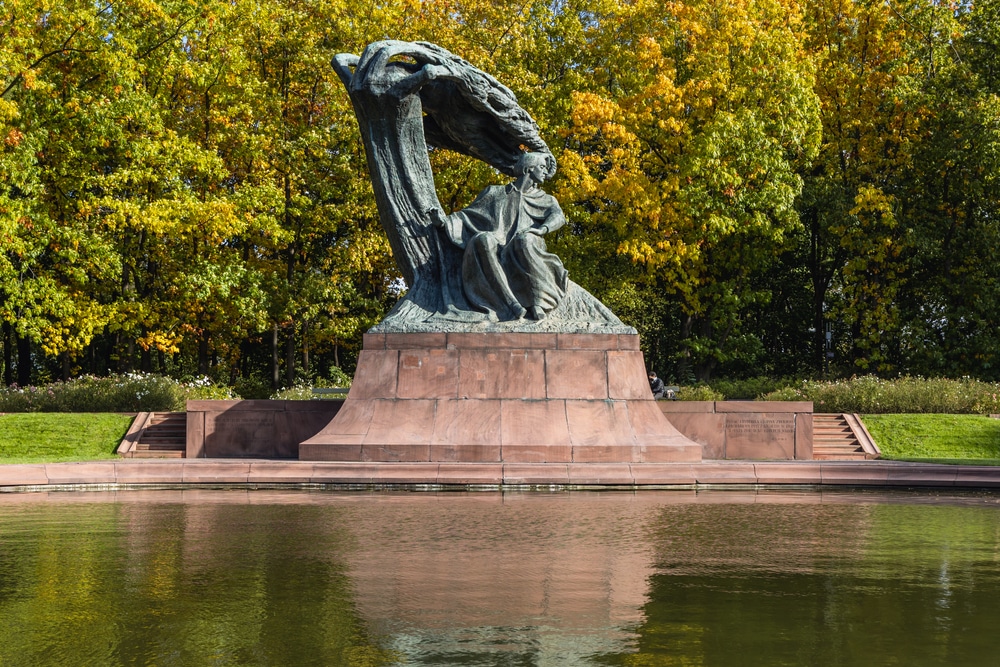 Source: Fotokon / Shutterstock
Source: Fotokon / ShutterstockAn arresting monument with an interesting story, this bronze statue for Frédéric Chopin (1810-1849) is in a formal garden on the upper, western side of Łazienki Park.
The work, aptly imbued with Romanticism, was designed by Wacław Szymanowski and planned for Chopin’s 100th anniversary but its unveiling was delayed until 1926.
In 1940 the monument became the first of many in Warsaw to be blown up by the Germans, and the next day a handwritten sign appeared at the site, reading, “I don’t know who destroyed me, but I know why: so that I won’t play the funeral march for your leader”.
Now on a pedestal of red Wąchock sandstone and sitting above a large circular basin, the Chopin Monument is a focal point for free piano concerts on Sunday afternoons with people sitting on the grass and even picnicking.
19. St Anne’s Church
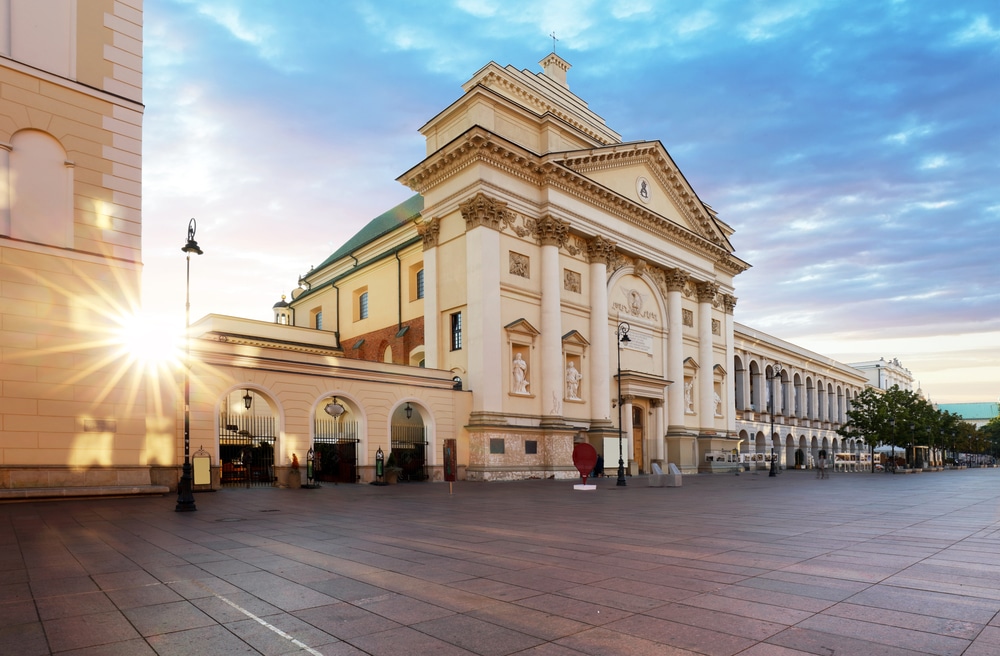 Source: TTstudio / Shutterstock
Source: TTstudio / ShutterstockOne landmark that we haven’t mentioned on Krakowskie Przedmieście is St Anne’s at No. 68, noted for a Neoclassical facade unaltered since 1788.
That was the last major reconstruction, and the building came through the Second World War relatively unharmed.
Before 1788 there had been several rebuilds going back to the church’s foundation in 1454. The oldest portion is the 15th-century Gothic chancel, while the remainder is in the Rococo style and dazzles with gilded stucco and polychromy.
One of many curiosities within is the wooden cross that was erected in front of the Presidential Palace after the Smolensk Air Disaster in 2010, sparking a debate in Poland about the separation of church and state.
The neo-Renaissance bell tower next door is from 1818 and gives you a super view of the Old Town, Castle Square and the National Stadium after a stiff climb.
20. Mausoleum of Struggle and Martyrdom
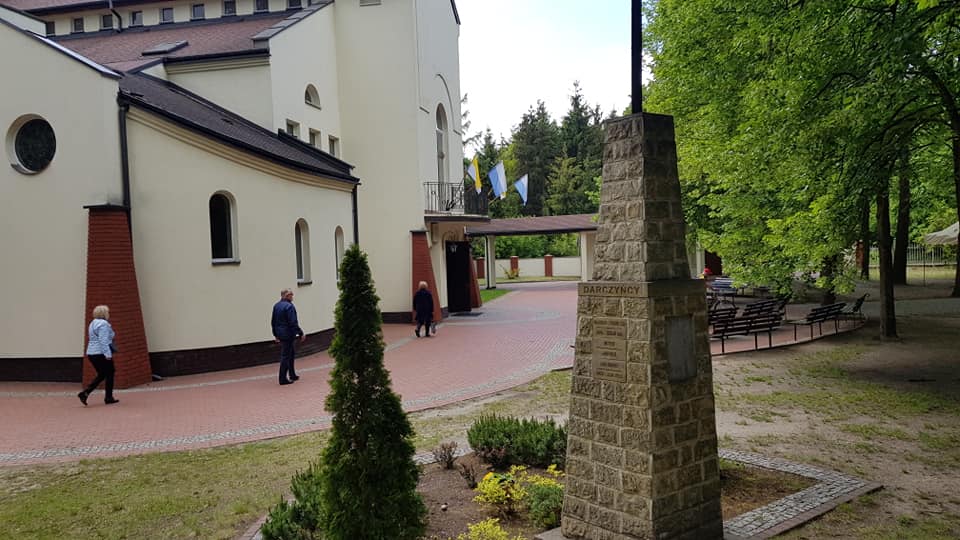 Source: facebook.com
Source: facebook.comAfter Nazi Germany took over Warsaw, this ministry building (now the Ministry of Education) near Łazienki Park was occupied by two police agencies, the Sicherheitsdienst and Sicherheitspolizei.
They built a jail in the basement, and the inmates, often freshly picked up, would be subject to brutal interrogations..
The prison has survived intact, and includes ten solitary cells, four group cells and a guard office, all along gloomy corridors.
Driving home the reality of this haunting place are some 1,000 inscriptions, carved by inmates into the walls, floors and window frames.
These range from personal details to calendars, religious symbols, prayers and poems.
21. Saxon Garden
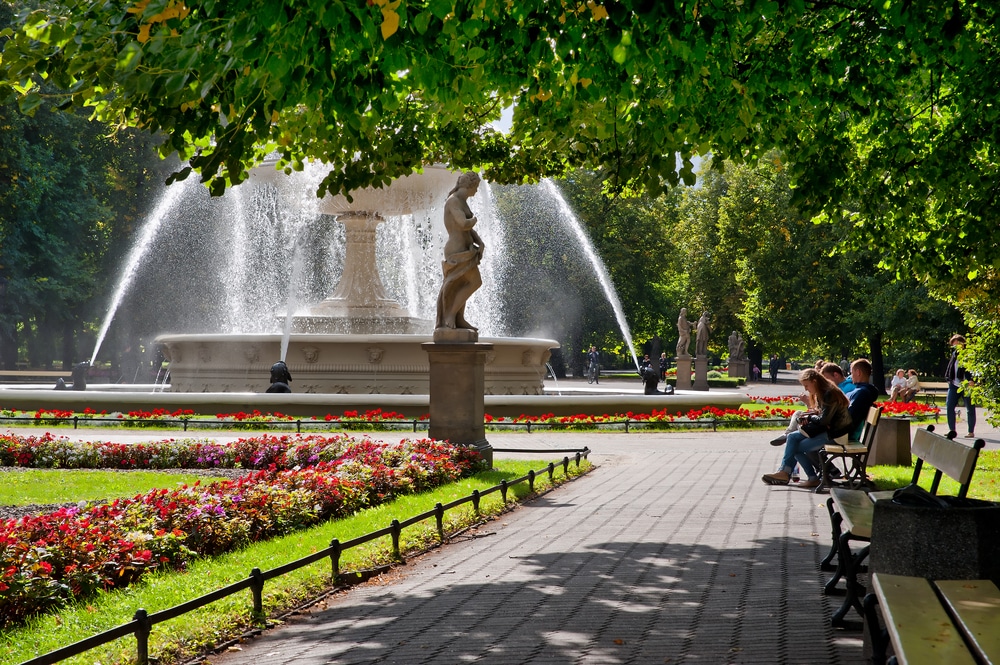 Source: dies-irae / Shutterstock
Source: dies-irae / ShutterstockWarsaw’s oldest park was landscaped on former fortifications in the last decades of the 17th century.
Saxon Garden opened its doors to the public in 1727, putting it among the oldest public parks in the world.
The linchpin on the main alley is an Empire-style fountain installed in 1855 and designed by Italian-Polish architect Enrico Marconi.
The alley is on the Saxon Axis, a line of now mostly lost parks and palaces cutting in west from the Vistula.
This ambitious urban plan was proposed by August II, to create a long vista out to the river for the 17th-century Saxon Palace.
That grand property, on the east side of Saxon Garden, was destroyed in WWII and hasn’t been rebuilt.
Worth seeking out elsewhere are a water reservoir, numerous Baroque sculptures, a sundial from 1863 and, on Piłsudski Square to the east, a monument to the 2010 Smolensk Air Disaster.
22. Tomb of the Unknown Soldier
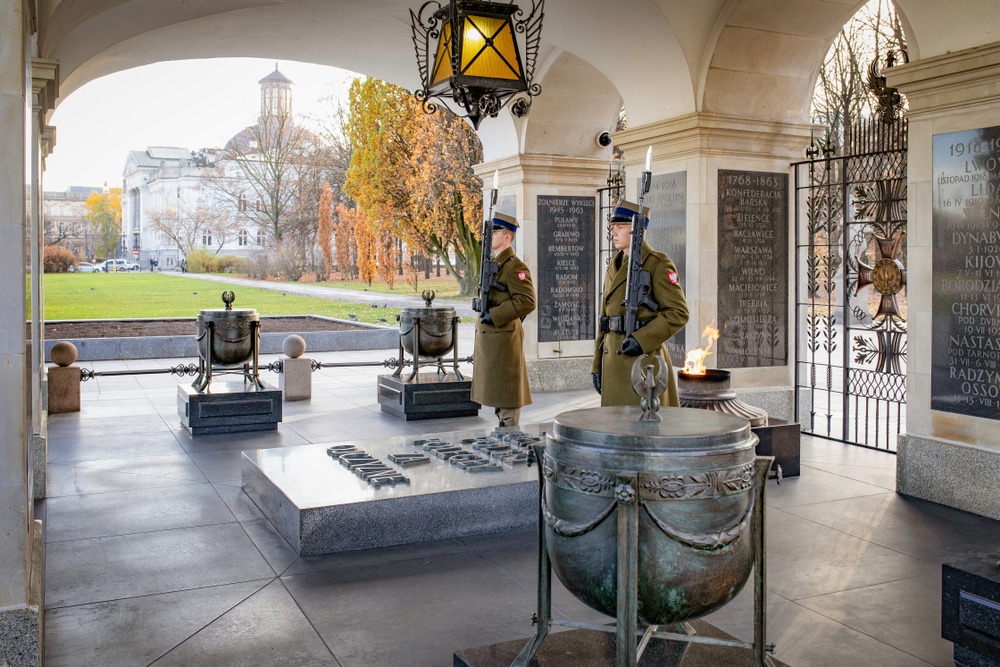 Source: Szymon Mucha / Shutterstock
Source: Szymon Mucha / ShutterstockThe last surviving fragment of the Saxon Palace on Piłsudski Square serves a war memorial to the unknown soldiers who have given their lives for Poland.
The tomb, designed by Stanisław Kazimierz Ostrowski, was initially unveiled in 1925 and the memorial was later repaired and enlarged in the wake of the Second World War.
In the intervening years the Saxon Palace had been destroyed, leaving only the arcade that linked the property’s two symmetrical wings.
The arcade’s pillars are clad with tablets bearing the names and dates of important battles in Polish history, accompanied by urns holding earth from key battlefields.
The Tomb of the Unknown Soldier is the most important such monument in Poland and is constantly lit by an eternal flame.
It’s guarded by the Representative Honor Guard Regiment, changing on the hour every day, 365 days a year.
23. Warsaw Barbican
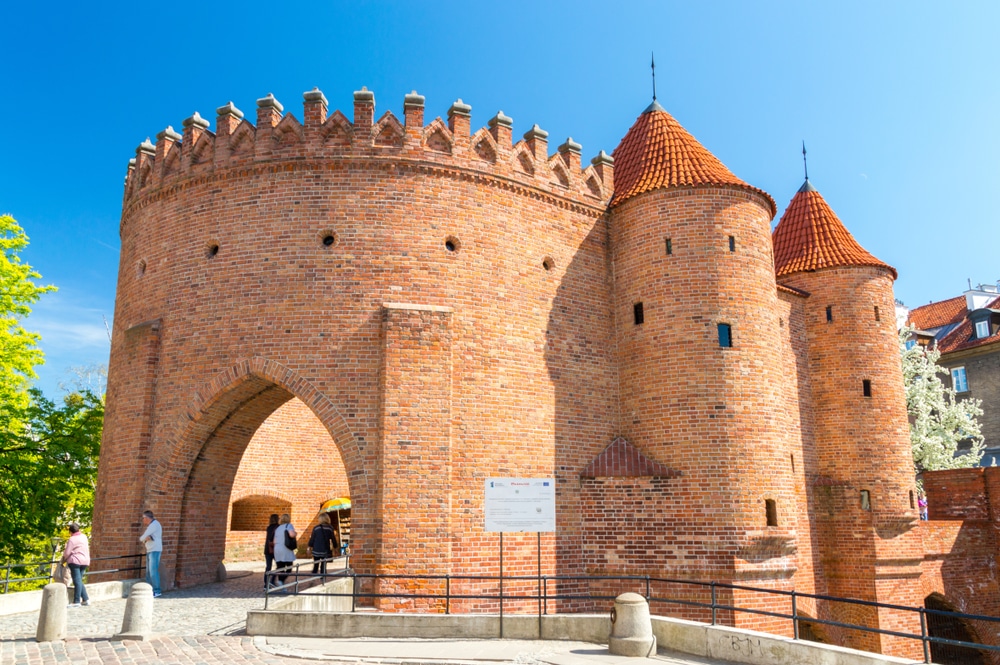 Source: Robson90 / Shutterstock
Source: Robson90 / ShutterstockA brief walk from the Old Town Market Square is the most compelling vestige of Warsaw’s historic fortifications.
Now at the boundary between the Old and New Towns, the Warsaw Barbican was built in 1540 during an update of the city’s 14th-century walls.
By the 1700s this fortified gateway had lost its defences and was partially dismantled before being absorbed by a row of 19th-century tenement blocks.
Those were obliterated in the Second World War, and so the city took the opportunity to rebuild the barbican using etchings from the 17th century.
The bricks used in the construction were fired hundreds of years ago and were salvaged from demolished buildings in Wrocław and Nysa.
Some local artists set up their easels here and sell their paintings from the arches flanking the passageway.
24. Museum of Pawiak Prison
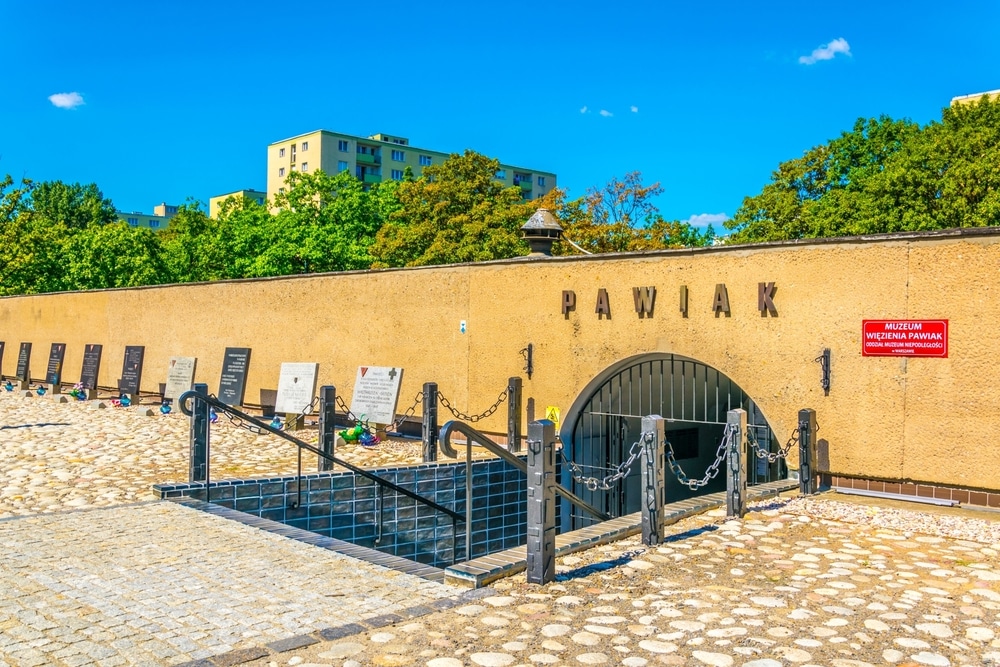 Source: trabantos / Shutterstock
Source: trabantos / ShutterstockIn a pattern repeated at the scene of most of its atrocities, Nazi Germany destroyed Warsaw’s infamous Pawiak Prison as they pulled out in the autumn of 1944.
Synonymous with oppression, the facility has an usually grim past and was built between 1829 and 1835.
In the 1860s this was a camp for participants in the January Uprising (1863) awaiting deportation to Siberia.
Then in WWII this became a Gestapo prison, processing more than 100,000 people, almost two thirds of whom were deported to concentration camps.
It is estimated that 37,000 of Pawiak Prison’s inmates died or were murdered on site, many in the days before the complex was destroyed in 1944.
The Museum of Pawiak Prison, a partner to the Mausoleum of Struggle and Martyrdom, has been housed in the surviving basement since 1990.
You’ll see surviving and rebuilt cells, affecting photo exhibitions and personal possessions of inmates.
25. Polish Army Museum
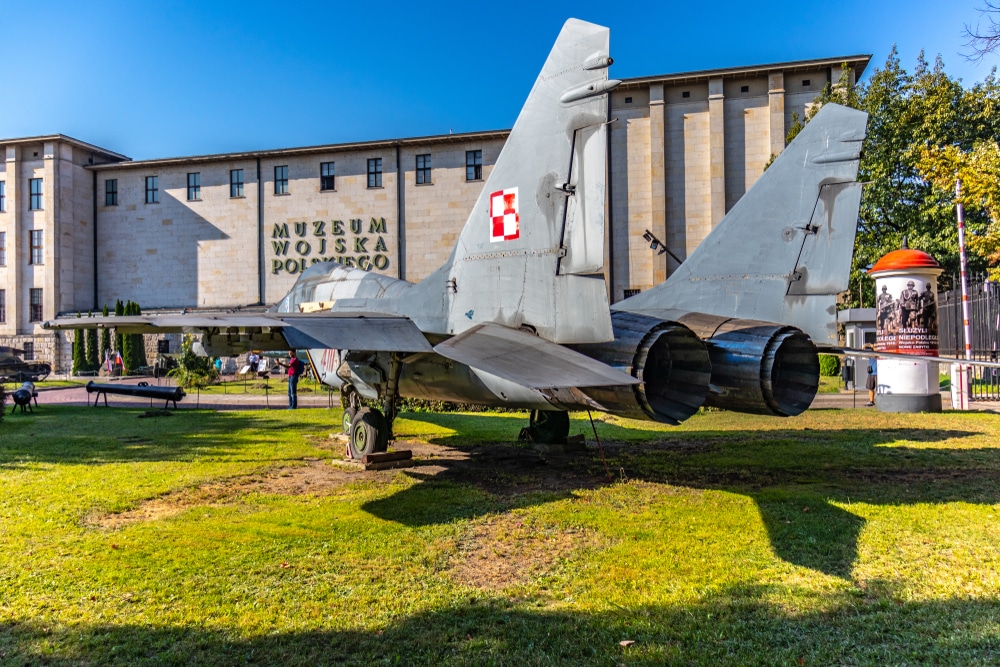 Source: FrankShot / Shutterstock
Source: FrankShot / ShutterstockThe east wing of the Modernist complex housing the National Museum in Warsaw contains this museum dedicated to the military history of Poland across 1,100 years.
What will catch your eye right away, and what may be the museum’s highlight, is a spectacular display of hardware in the forecourt beside Marshal Rydz Park.
This mostly dates from the Second World War and includes Western, Polish and Soviet tanks, aircraft, armoured personnel carriers and artillery.
The galleries inside, containing Poland’s largest collection of military artefacts, tell you much about Poland’s tempestuous past.
From the heyday of the Polish–Lithuanian Commonwealth in the 17th century there’s an impressive exhibit of hussar armour adorned with eagle wings and leopard skins.
Some of the must-sees are a 10th-century gold-plated commander’s helmet from the time of Poland’s first Christian kings, sabres belonging to a succession of kings, including Stephen Báthory (1533-1586) and a 14th-century Gothic reliquary.